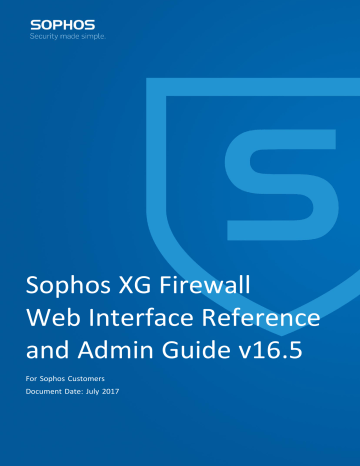| Monitor and Analyze | 21
This panel displays information of Gateways which allows administrator to monitor Active and Backup Gateways describing their Name, Interface, Type, IPv4/IPv6, Activate on Failure of, Weight and Status.
Displays following details:
1. Gateway Name - This displays the name of the Gateway.
2. Interface - This displays the name and IP address of the Interface.
3. Type - This displays the type of the Gateway in terms of load balancing. Available options are Active and Backup.
4. IPv4/IPv6 - This displays the type of the Gateway in terms of IP addressing type used. Available options are IPv4 and IPv6.
5. Activate on Failure of - This displays the action for the Gateway failure situation, i.e. whether a backup Gateway will be activated or not.
6. Weight - This displays that how much traffic will pass through a particular link in relation to the other link(s).
7. Status - This displays the status of the Gateway. Status can be Active, Deactive.
Current Activities
The Current Activity section provides information about the live IPsec, SSL, IP and wireless connections to the device.
•
Live Users
: Displays a list of all the users currently connected to the device.
•
IPsec Connections
: Displays a list of all the live IPsec connections.
•
Remote Users
: Displays a list of all the live SSL VPN users.
•
Live Connections IPv4
: Displays a list of the live IPv4 connections on the device. You can forcefully disconnect the connections from the respective pages.
•
Live Connections IPv6
: Displays a list of the live IPv6 connections on the device. You can forcefully disconnect the connections from the respective pages.
Live Users
Live users in the device can be managed from a single page. All the active normal users, clientless users and single sign-on users are visible from the Live Users page. The administrator can disconnect these users from this page directly.
User Types:
• Normal
• Clientless
• Single Sign-On
• Thin Client
• WWAN user
A normal user has to logon to the device. It requires a client (client.exe) on the user machine or a HTTP client component can be used and all the policy-based restriction are applied.
A clientless user does not require a client component (client.exe) on the user machines.
If a user is configured for single sign-on, whenever the user logs on to Windows, he/she is automatically logged to the device.
If the user is a thin client user, whenever the user logs on, this is visible on the Live Users page.
If a wireless user is configured and connected, the user is shown on the Live Users page.
To disconnect a user:
1.
Click the Disconnect icon under the Manage column against a user.
2. Specify the message in a dialog box.

